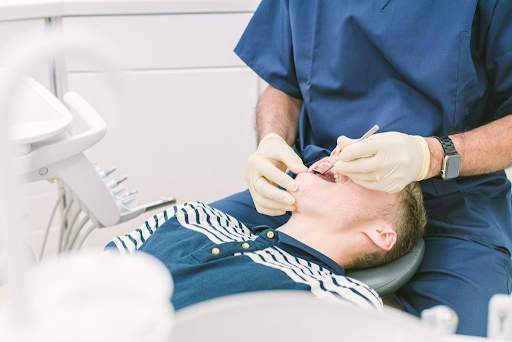Have you ever had the fear that something was stuck in your teeth before (or during) an important meeting?
We’ve all been there. Concern about how our smiles look is ingrained in most of us from childhood. It’s usually not a conscious thing, but the reality is that having a healthy, attractive smile is often linked with success and happiness.
So when you’re checking your teeth for food, and you see the light vertical lines spreading their way across the enamel, it’s understandable that you’re concerned.
These are called craze lines, and they’re not dangerous. Still, you should know what’s causing them to keep them from worsening and how to treat them to make them go away.
1. The Causes of Lines on Your Enamel
Craze lines are a common part of the aging process. As we continue to use our teeth to chew, bite, and do other things, the gradual wear and tear weakens the enamel and turns into hairline cracks.
The habit of chewing on non-food items, like pen caps, fingernails, and ice cubes, speeds up the process. If you’re a bruxer, the grinding and clenching of your teeth that goes along with this condition is likely the cause of the superficial cracks.
Whatever’s creating them, you want them gone.
The first step is to try to understand why the lines are appearing so you can minimize future cracks. In the meantime, try these tips to treat the craze lines and get your smile back on track.
2. Tooth Whitening Strips
For mild craze lines that are just beginning to show up, a tooth whitening strip can help. The lines are typically grayish-yellow discolorations, and the bleaching agent helps lighten them, so they blend in with your whiter shade of enamel.
Keep in mind that the lines may not disappear. They could still be there but hidden by the lighter color. You may need a professional whitening treatment or more complex care in those cases.
3. Resin Composite Treatments
If your craze lines are truly bothering you, your dentist may recommend a procedure called tooth bonding. It’s a treatment provided by dental specialists to tint your teeth using cosmetic resin.
Tooth bonding works similarly to caulking the cracks in your home. It can fix the appearance of gaps and chips in your teeth, fractures and cracks, discoloration, decay, and craze lines. It’s a simple, affordable treatment that only takes one appointment and doesn’t require any preparation.
After your teeth are cleaned, the dentist will choose a resin color that matches your natural enamel. The resin material is like putty, easily molded into the right shape to fill in your lines.
The putty is applied, perfected, and allowed to dry. You can return to your day with minimal aftercare as soon as you leave.
4. Porcelain Veneers
A step above cosmetic bonding is a porcelain veneer. These are more expensive than composite resin treatments but are ideal for stubborn cracks and chips.
Veneers are thin shells that bond to your enamel. They’re custom-made for each tooth and will slide directly onto the front surface.
The downside of veneers is that the enamel must be shaved down to give the shell a place to sit. However, once it’s applied, there’s no visible difference between the veneer and the rest of your teeth.
Unlike composite resin treatments, veneers require multiple office visits to apply. The shells are individually made, and your teeth are prepped prior to the application. Because of the need to shave the enamel before placement, you may feel more sensitivity after a veneer treatment than you would with a composite resin fix.
However, the shells are extremely durable, lasting years before they require replacement, and able to hold up to regular wear and tear. They hold up to grinding and clenching better than composite resin, although you should wear a night guard if you’re a bruxer to prevent damaging your enamel and veneers.
Veneers are a popular option for people who want one or two flaws fixed. If your craze lines are more severe on a couple of teeth, this treatment may be right for you.
Conclusion
Craze lines on your teeth aren’t the end of the world, nor always a sign of a serious oral health problem.
Left untreated, though, these superficial cracks could become dental issues down the road. Talk to your dentist if the lines you see don’t go away or return after at-home whitening treatments.

